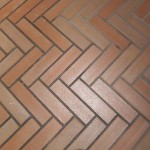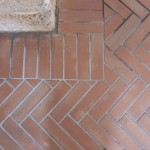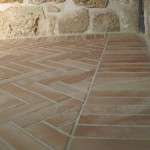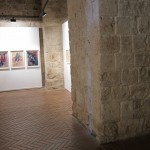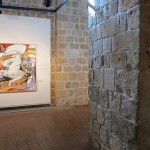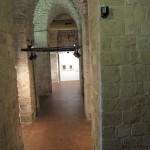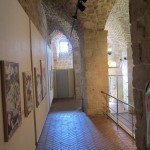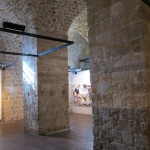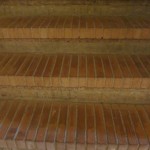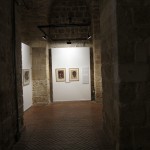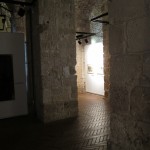Avshalom Okashi (1916-1980) was one of Israel’s most salient artists had left an indelible mark on the Israeli art making part of the New Horizons movement. He had spent most of his life in Acre, where he set up his painting work shop which had become the Okashi Museum posthumously, as his artistic heritage to the future generations.
Museum Okashi is located in Acre (Akko) in the Western Galilee region of northern Israel, at the northern extremity of Haifa Bay in the Mediterranean Sea. Acre is one of the oldest sea ports in history, continuously inhabited sites in the country with over four thousand years of history since The early Bronze Age period, designated by UNESCO at 2001 as a World Heritage Site.
Unique museum adjacent to the Knights’ Halls in Old Acre, an ancient building with cruciform domes dating back to the Ottoman period houses this museum of featuring rotating exhibitions of Israeli art. The suggestive structure had been built during the Ottoman period by Ahmed al-Jazzar Pasha who was a Christian slave sold in the slave-markets of Constantinople and bought by an Egyptian ruler who converted him to Islam. The Ottoman structure had been constructed above a large Crusaders compound consisted of Crusaders main fortress (castrum) and headquarters, halls and many other different structures built by the “Hospitallers” the order of the Knights of the Hospital of Saint John in the beginning of the 12th century, after the Crusaders captured the city in 1104.

The museum opened in 1993 after historical conservation and planning project headed by Architect Nahum Meltzer from Jerusalem from N.Melzer-G.Igra Architects, nowadays N. Meltzer architects, Jerusalem.
The architectural planning had taken in consideration the historical structure made of local sandstone of white-yellowish colors which had been worked 200 year back. The curved interior facing blocks of which huge square columns support cruciform domes with particular windows opened indoor and external outdoor was matched with interior “Florentine red” bricks pavement. The redesigned space donates to the structure a unique peaceful harmony on one hand and donates a significant vision to the place as terracotta bricks had been found in this area, being used in old times probably during the Italian settlement of Genoa and Pisa in Acre.
The final result of the architectural planning is astonishing by its grace and leaves great admiration on thousands of visitors coming each month to the museum.
The bricks are heavy duty load compression and are used for internal paving ad stairs construction as well as external paving for streets, piazza squares, promenades used by private cars & trucks. The technical properties as frost resistant, abrasion resistant & slip resistant, UV resistant and pH resistant make them high quality material
The project was supplied by 650 m² of the following materials:
- Internal pavement
Sestine Greve 7×2,5×28 cm - Stairs- Trades
Sestino Classico 7x4x28















